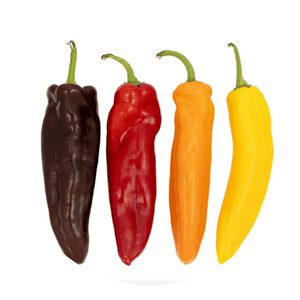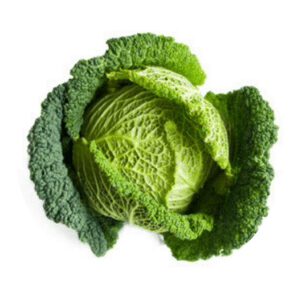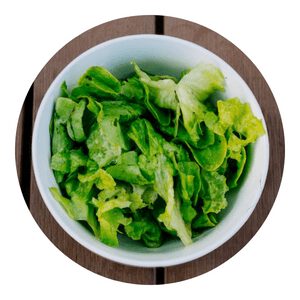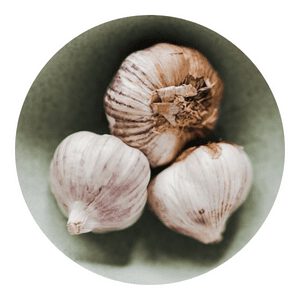How Long Does it Take to Grow Kale?
Growing kale is a popular choice among those who are looking for an easy, nutrient-rich vegetable to add to their diets.
This leafy green is packed with vitamins and minerals, making it a great choice for a healthy lifestyle.
But how long does it take to grow kale?
Kale Menu
Definition and brief overview of kale
Kale is a leafy green vegetable that has been gaining in popularity over the last few decades.
It belongs to the Brassica family, which also includes cabbage and broccoli.
Kale offers a range of health benefits as it contains high levels of beta carotene, Vitamin C and Calcium.
This nutrient-rich vegetable can be enjoyed cooked or raw, adding flavor to salads, soups, stir-fries and smoothies.
Kale can be grown both indoors and outdoors in cooler climates.
The type of kale you select will depend on your climate conditions; some varieties are more suited to warmer weather while others prefer cooler temperatures.
As with other vegetables, there are a number of different methods for growing kale including soil beds, containers or hydroponic systems.
Importance of kale in a healthy diet
Kale is one of the most nutritious and versatile vegetables available, making it a great addition to any healthy diet.
Kale contains essential vitamins and minerals like vitamin A, C, and K, as well as antioxidants that are known to protect against cancer and cardiovascular disease.
It also has high amounts of dietary fiber which can help with digestion.
With all these health benefits, adding kale to your diet is a no-brainer! But how long does it take for this leafy green vegetable to grow?
Kale grows best in cooler climates where temperatures range between 45–75°F.
Depending on the variety of kale, it generally takes around 4 weeks from planting the seeds until harvest time.
For a continuous supply of fresh kale leaves throughout the season, sow more seeds every 2–3 weeks so that you have an ongoing supply of young leaves.
Factors that Affect the Growth of Kale
Kale is one of the most popular vegetables today.
It is rich in vitamins, minerals and antioxidants, making it a nutritious addition to any diet.
While it can take anywhere from 45-90 days for kale to reach maturity, there are several factors that can influence the growth rate of this leafy green.
One factor that affects the growth of kale is temperature; temperatures between 65-75°F (18-24°C) are ideal for optimum growth. Kale also needs full sun and plenty of water; keeping soil moist but not soggy will ensure optimal conditions for growing.
Additionally, adequate space between plants should be given when planting multiple seeds to ensure healthy development without overcrowding.
Fertilizer should be applied every two weeks or so during the growing season to provide nutrients and encourage better yields.
Climate and temperature
Climate and temperature are two of the most important factors to consider when growing kale.
Kale is a cool-season crop, meaning it can tolerate frost and even light snowfall.
When temperatures rise above 70 degrees Fahrenheit (21°C), kale will bolt — or flower and produce seeds — which makes the leaves bitter.
For optimal growth, it’s best to plant kale in late summer or early autumn, depending on your location.
Kale likes full sun but can tolerate partial shade if temperatures get too hot during the day.
The soil should be well-drained and rich in organic matter, allowing adequate moisture while still draining excess water.
Additionally, adding a layer of mulch around the plants will help protect their roots from extreme temperatures as well as keep down weeds.
Kale, oh leafy greens of delight, we plant you so full of promise and might. A few weeks pass with stars twinkling in the night and before we know it our vegies stand tall and bright! With tender leaves and their earthy scent so sweet, green are your colors, when small just a feat. We wait with anticipation, for harvest day to arrive to join us at dinner table, from start to end - five weeks to thrive!
Chappy The Gardener
Soil type and quality
Soil type and quality are essential elements in the successful cultivation of kale, a cruciferous vegetable.
Kale grows best in soils that are high in organic matter, with a pH of 6.0 to 6.5.
To determine soil type and fertility, gardeners should use a soil test to measure nutrient levels such as nitrogen, phosphorus, and potassium.
Knowing the exact nutrient content of your soil is an important factor for producing healthier plants and larger yields of kale.
The texture of the soil also plays an important role when growing kale; sandy loam or clay loam soils with good drainage work well for this crop since it does not tolerate overly wet conditions well.
Additionally, adding compost to your soil can improve its structure and provide extra nutrition for kale plants.
Watering and fertilization
Growing kale is a great way to add nutrient-packed greens to your diet.
To ensure that your kale crop will grow healthy and strong, it’s important to follow the correct watering and fertilization routine.
Here are some tips on how long it takes to grow kale and what you need to do in terms of watering and fertilizing:
When planting kale seeds, they should be placed about 1/4 inch deep in soil that has been watered beforehand.
Kale plants should be kept moist at all times during their growth process—about 1 inch of water per week or more if the weather is particularly hot or dry.
Additionally, feed your plants a slow-release fertilizer every three weeks for optimal growth.
Sun exposure
Sun exposure is an important part of growing healthy kale. Without enough sunlight, the plants will not thrive and will have small, bitter leaves.
Kale needs at least six to eight hours of direct sunlight each day for optimal growth. Planting in a sunny spot and rotating crops can help ensure that your kale gets enough light for its best growth.
Kale is a fast-growing vegetable and can be ready for harvest in as little as 45 days from germination when planted during the warm months of summer.
Even during shorter days, kale can still grow if there’s enough sun exposure throughout the day; however, it may take longer to reach maturity than when planted in warmer weather with more direct sunlight hours.
To maximize production and quality of your homegrown kale plants, be sure they get plenty of sunshine!
Pest and disease control
Pest and disease control is a key component of growing kale.
Pests and diseases can quickly ruin a crop, so it is important for farmers to have a plan in place to prevent and address these issues.
Without proper pest and disease control, the process of growing kale will take longer than necessary due to the plant’s increasing vulnerability.
To increase the speed at which one can grow kale, it is vital that adequate steps are taken for pest and disease management.
Good pest control practices should include an integrated approach incorporating biological controls such as beneficial insects or natural predators, mechanical traps or barriers, cultural techniques like crop rotation and sanitation, as well as chemical sprays when needed.
Furthermore, avoiding monocropping (growing only one crop in a field) can prevent the buildup of pests in soil since they would not be able to specialize on one type of plant or food source.
How Long Does it Take for Kale to Grow?
Kale is a popular and nutritious vegetable, but many people are wondering just how long it takes to grow this crop.
The answer depends upon the variety of kale being grown, as well as the amount of sunlight and water available in the garden.
Generally speaking, kale can take anywhere from 40 to 80 days to reach full maturity.
Most kale varieties will be ready for harvesting within 40-50 days if they are planted in early spring or late summer when temperatures are more moderate.
When grown in other periods of the year with higher temperatures and direct sunlight, these varieties may require up to 70 days or more until they reach their peak size and flavor.
Additionally, certain varieties such as dinosaur kale may take significantly longer — up to 80 days or more — before they are ready for harvest due to their larger leaves and thicker stalks.
Average growing time for kale
Kale is a hearty, nutritious green vegetable that is becoming increasingly popular in home gardens.
This leafy green is easy to grow and can be harvested within as little as three weeks if planted at the right time of year.
But what is the average growing time for kale?
The answer depends on several factors, such as the variety of kale being grown, the climate in which it’s being grown and how much care and attention it receives from its gardener.
Generally speaking, most varieties of kale take about two months to reach maturity when starting from seed.
The growing season for mature plants may extend for up to several months depending on where you live and what type of kale you are growing.
Kale can also be started indoors four to six weeks before transplanting outdoors, which will reduce its overall growth period by a few weeks.
Factors that can affect the growing time
Growing Kale is an easy and rewarding process, but many factors can influence the time it takes to grow.
The amount of sunlight a plant gets is one factor that affects growing time in kale.
Kale needs at least six hours of full sun to reach its maximum growth potential.
If gardeners are unable to provide enough light, then it may take longer for the vegetables to reach their desired size.
Additionally, temperatures also play a role in how long it takes for kale to mature properly; cooler climates can extend growing times due to slower rates of photosynthesis and germination.
Soil quality is another important factor when considering how long does it take to grow kale.
Ways to speed up the growing process
Kale is a nutritious leafy green that can be incorporated into many dishes, but how long does it take to grow?
Knowing the answer to this question can help you decide if you are able to have your own kale garden.
Luckily, there are certain techniques that you can use in order to speed up the growing process.
First and foremost, start with good soil. Make sure the soil has enough nutrients so that the kale will be able to thrive.
Additionally, make sure the area where you are planting gets plenty of sun and water.
This will ensure your kale plants get what they need in order to flourish quickly and efficiently.
Another way to speed up the growing process is by using fertilizers or organic composts that contain nitrogen-rich organic matter such as grass clippings or shredded leaves for mulching purposes.
Harvesting Kale
Kale is a nutrient-rich vegetable that can be harvested in as little as 4 weeks of growth.
Once kale reaches maturity, it’s time to harvest the plant and enjoy its bounty.
Proper harvesting technique will ensure that you get the most out of your crop of kale.
Harvesting kale can be done by cutting off individual leaves from the lower part of the stem or by cutting down an entire stalk.
When harvesting individual leaves, make sure to leave some behind so that new ones may grow in their place; this method allows for multiple harvests throughout the growing season.
It is best to cut down entire stalks at once when they are mature enough, which usually occurs four to five weeks after planting seeds or transplanting seedlings into the garden.
Make sure to wear gloves when harvesting kale since it can irritate sensitive skin!
When to harvest kale
When it comes to harvesting kale, timing is key. Kale is a nutrition powerhouse and an excellent source of vitamins A, C, and K, but how do you know when the time is right?
Kale can be harvested as soon as it reaches maturity — usually between 55-75 days after planting — depending on the variety of kale grown.
To determine when your kale has reached maturity, examine the size and shape of its leaves.
If they’re dark green in color with either a crinkled or curled texture, then it’s ready for harvest.
The best time to pick your kale is early in the morning or late evening when temperatures are cooler; this will keep it fresh for longer and make it easier to store.
When harvesting your crop of kale, always leave some leaves behind so that the plant can continue producing new growth.
How to harvest kale
Harvesting kale is an important part of the process when it comes to growing and enjoying this popular leafy green.
Though it takes some time to grow, harvesting kale properly can help you enjoy its nutritious benefits for weeks or even months on end.
Kale is a vegetable that thrives in cooler temperatures, making it perfect for those living in cooler climates who don’t want to wait until summertime to start their gardening projects.
With proper care and a little patience, you can have fresh kale ready for harvest in as little as 40 days!
Storing and preserving harvested kale
Storing and Preserving Harvested Kale is an important part of the gardening process.
For vegetable gardeners, harvesting kale at the right time can mean a bounty of healthy greens for months to come.
Knowing how to store and preserve kale properly will help you maintain its freshness, nutrition, and flavor for far longer than it would normally last.
Kale can be stored in plastic bags or containers in the refrigerator for up to 5 days.
To extend its shelf life even further, blanching it before freezing is recommended.
Blanching helps remove any lingering dirt or debris before freezing as well as prevents loss of texture or flavor during storage.
You can also dehydrate kale leaves by spreading them out on a baking sheet and setting your oven at low heat (200 degrees F).
In conclusion, kale is a highly nutritious vegetable that can grow in a variety of climates and soil conditions.
As an annual plant, it takes anywhere from 55 to 80 days to reach maturity and is ready for harvest when the leaves are dark green and firm.
It does not require special care and can be grown both indoors or outdoors.
Kale is also very easy to prepare, making it a great addition to any diet.
Click To Grow
Helps Us Grow – Share If You Like



















